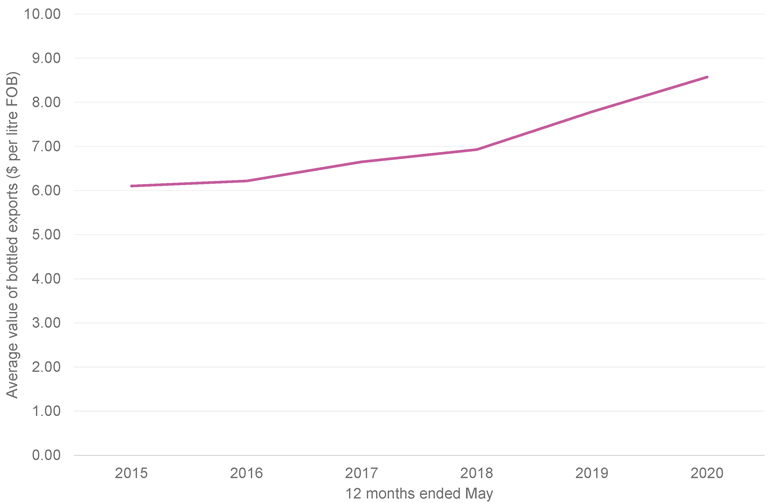Shiraz is one of Australia’s most established and loved varieties. It is grown by 4 out of 5 wineries and represents nearly half of red winegrape plantings. This variety is called Syrah almost everywhere else in the world. However, due to its commercial success internationally, many Australian producers have chosen to label their own wine ‘Shiraz’.
On 23 July, Australia will recognise this powerhouse variety with the inaugural Shiraz Day.

In the 2020 vintage, Shiraz was Australia’s most crushed variety. Shiraz, which declined by 10 per cent to 376,000 tonnes (see Figure 1), fared relatively well compared with other varieties and increased its share by one percentage point to 45 per cent of all red varieties and 25 per cent of the total crush.
Figure 1: Australian Shiraz crush over time

Source: Wine Australia
The average price paid for Shiraz grapes increased by 2 per cent to $921 per tonne, the sixth consecutive vintage in which the price has increased. Prices increased in most of the major Shiraz producing regions:
- Riverland – up 13 per cent to $697 per tonne
- Murray Darling – Swan Hill – up 11 per cent to $664 per tonne
- Riverina – up 5 per cent to $633 per tonne
- Barossa Valley – up 13 per cent to $2612 per tonne, and
- McLaren Vale – up 8 per cent to $2107 per tonne.
Figure 2 illustrates, the national average purchase price for Shiraz has generally been on an upward trend since falling to a low of $487 per tonne in 2011. For more vintage information on Shiraz, refer to the 2020 National Vintage Report.
Figure 2: National Average Purchase Price of Shiraz over time

Source: Wine Australia
The upward trend in the purchase price for Shiraz reflects the demand for Australian Shiraz wines, especially in the domestic market.
Figure 3 illustrates that the volume of Shiraz sold in the domestic off-trade market has grown across all price segments in the past two years, according to IRI MarketEdge. The growth has been most pronounced between $10 and $30 per bottle.
Figure 3: Shiraz sales in the Australian off-trade market by price segment

Source: IRI MarketEdge
The volume of Australian Shiraz exported has very closely tracked the annual crush (see Figure 4). The big increase in the Shiraz crush in 2017 saw a corresponding increase in volume exported in the 12 months ended May 2018. Smaller vintages in 2018 and 2019 saw the volumes exported drop in 2019 and 2020. A lower vintage again in 2020 will likely see the volumes of Shiraz exported fall in the next 12 months.
Figure 4: Volume of Shiraz exported over time

Source: Wine Australia
While the volume of Shiraz exports has dropped, the demand for Shiraz has not. This is illustrated by the upward trend in the price paid for bottled exports of Australian Shiraz (see Figure 5). For the 12 months ended May, the average value has grown from $6.10 per litre in 2015 to $8.57 per litre in 2020. This indicates that while volumes are tight, importers continue to pay higher prices to secure Australian Shiraz.
Figure 5: Average value of Australian bottled Shiraz over time

Source: Wine Australia
